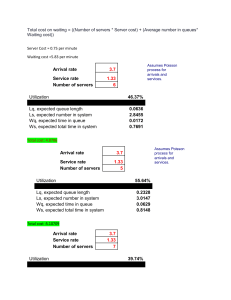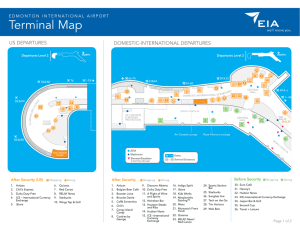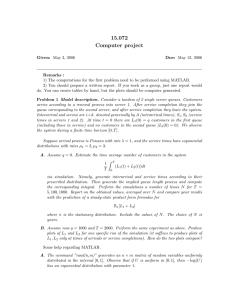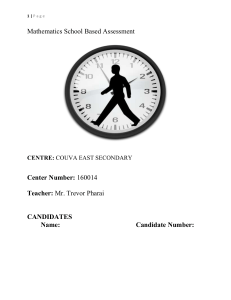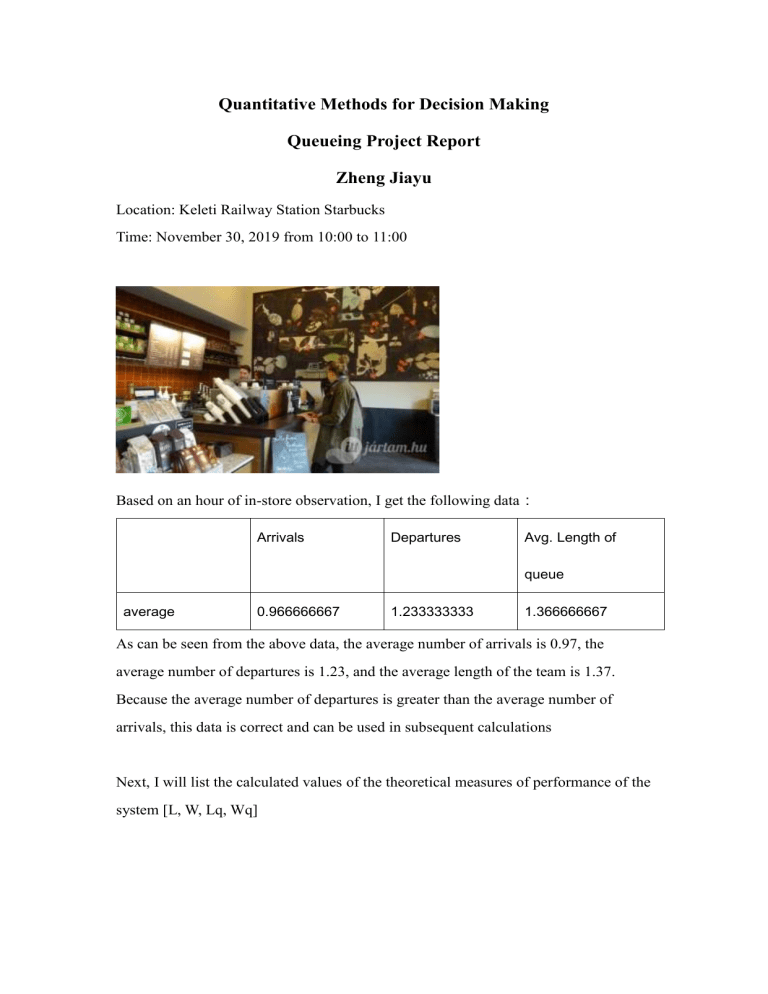
Quantitative Methods for Decision Making
Queueing Project Report
Zheng Jiayu
Location: Keleti Railway Station Starbucks
Time: November 30, 2019 from 10:00 to 11:00
Based on an hour of in-store observation, I get the following data
:
Arrivals Departures Avg. Length of queue average 0.966666667 1.233333333 1.366666667
As can be seen from the above data, the average number of arrivals is 0.97, the average number of departures is 1.23, and the average length of the team is 1.37.
Because the average number of departures is greater than the average number of arrivals, this data is correct and can be used in subsequent calculations
Next, I will list the calculated values of the theoretical measures of performance of the system [L, W, Lq, Wq]
Utilization factor 0.784
L q
= 2.841
W q
2.939
L = 3.625
> 1.367
W 3.750
According to the data, the Utilization factor is less than s, so the data is true, and we can see that the calculated average length is larger than the actual data.
So what happens if we triple the speed of service provided by the service device
[cashier] to our customers?
Arrival rate 0.966667
Service rate 2.466667
Avg queue length 1.366667
So we multiplied the service rate by 2, Then got the following data.
Utilization factor 0.392
L q
= 0.253
W q
0.261
L = 0.644
< 1.367
W 0.667
We can find that the average length is much smaller than the last calculation, and even smaller than the actual observation data.
Then we raised the server to two,
Arrival rate 0.966667
Service rate 1.233333
2 server
According to the formula I calculated the values of p0 and Lq, Results as shown
p
0
L q
s s !
1
s
s
1
s
1 n
0
n n !
p
0
, s
s !
1
1
s
2
, p n
n p
0 n !
s !
s n n
s p
0
L
L q
, if if
0
n
s
, n
s
W q
L q
, W
W q
1
According to the formula and the values of p0 and Lp, we can calculate the data of the other three
Utilization factor 0.784
L q
= 0.142
W q
0.146897
L = 0.926
> W 0.957707
Comparing the two sets of data, we find that although the server has increased to two, the average length and waiting time are higher than one server twice fast.
So my opinion is that in a store where the number of waiters is not particularly large, a two-speed server is more efficient and costs less than two servers.
